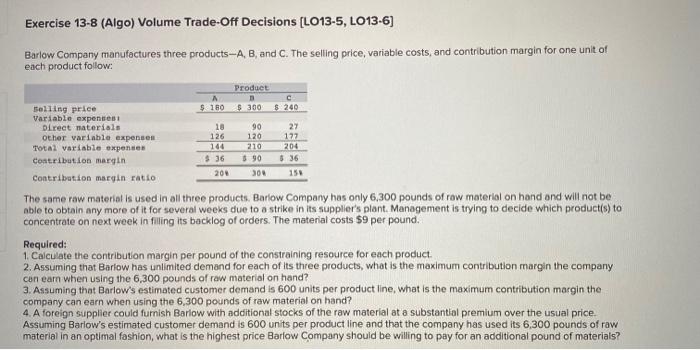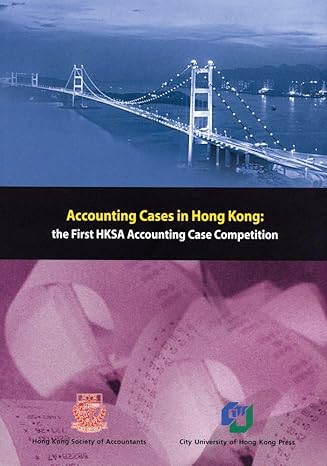Problem 13-22 (Algo) Special Order Decisions [LO13-4] Polaski Company manufactures and sells a single product called a Ret. Operating at capacity, the company can produce and sell 44,000 Rets per year. Costs associated with this level of production and sales are given below: The Rets normally sell for $53 each. Fixed manufacturing overhead is $396,000 per year within the range of 38,000 through 44,000 Rets per year. Required: 1. Assume that due to a recession, Polaski Company expects to sell only 38,000 Rets through regular channels next year. A large retail chain has offered to purchase 6,000 Rets if Polaski is willing to accept a 16% discount off the regular price. There would be no sales commissions on this order; thus, variable selling expenses would be slashed by 75%. However, Polaski Company would have to purchase a special machine to engrave the retail chain's name on the 6,000 units. This machine would cost $12,000. Polaski Company has no assurance that the retail chain will purchase additional units in the future. What is the financial advantage (disadvantage) of accepting the special order? (Round your intermediate calculations to 2 decimal places.) 2. Refer to the original data. Assume again that Polaski Company expects to sell only 38,000 Rets through regular channels next year. The U.S. Army would like to make a one-time-only purchase of 6,000 Rets. The Army would reimburse Polaski for all of the varlable and fixed production costs ossigned to the units by the company's absorption costing system, plus it would pay an additional fee of $1.80 per unit. Because the army would pick up the Rets with its own trucks, there would be no variable selling expenses associated with this order. What is the financial advantage (dispdvantage) of accepting the U.S. Army's special order? 3. Assume the same situation as described in (2) above, except that the company expects to sell 44,000 Rets through regular channels next year. Thus, accepting the U.S. Army's order would require giving up regular sales of 6,000 Rets. Given this new information, what Is the financial advantage (disadvantage) of accepting the U.S. Army's special order? Exercise 13-8 (Algo) Volume Trade-Off Decisions [LO13-5, LO13-6] Barlow Company manufactures three products A,B, and C. The selling price, variable costs, and contribution margin for one unit of each product follow: The same raw material is used in all three products. Barlow Company has only 6.300 pounds of row material on hand and will not be able to obtain any more of it for several weeks due to a strike in its supplier's plant. Management is trying to decide which product(s) to concentrate on next week in flling its backlog of orders. The material costs $9 per pound. Required: 1. Caiculate the contribution margin per pound of the constraining resource for each product. 2. Assuming that Barlow has unlimited demand for each of its three products, what is the maximum contribution margin the company can earn when using the 6.300 pounds of raw material on hand? 3. Assuming that Barlow's estimated customer demand is 600 units per product line, what is the maximum contribution margin the company can earn when using the 6,300 pounds of raw material on hand? 4. A foreign supplier could fumish Barlow with additional stocks of the raw material at a substantial premium over the usual price. Assuming Barlow's estimated customer demand is 600 units per product line and that the company has used its 6,300 pounds of raw material in an optimal fashion, what is the highest price Barlow Company should be willing to pay for an additional pound of materials








